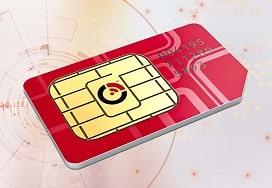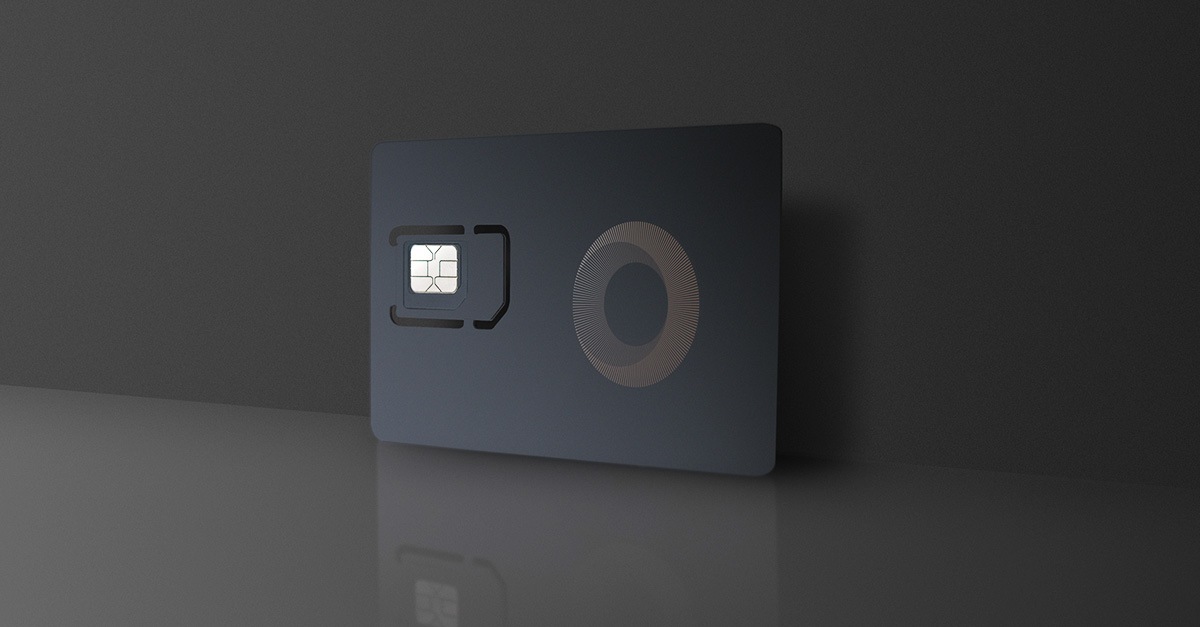What Is IoT Connectivity? Introduction to IoT Connectivity Options
What Is IoT Connectivity? Introduction to IoT Connectivity Options
Blog Article
Connectivity Management IoT Explanations and Solutions for IoT Connectivity

The speedy evolution of the Internet of Things (IoT) has led to an elevated concentrate on connectivity options for devices, permitting them to communicate and relay info successfully. As businesses and industries incorporate IoT options to enhance efficiency and increase processes, understanding the variations between cellular and non-cellular IoT connectivity becomes essential.
Cellular connectivity makes use of existing cellular networks to attach devices, allowing for knowledge transmission over extensive geographical areas. This technology is well-established, supported by many years of infrastructure growth, and has the advantage of offering customers sturdy protection and reliable communication. Devices outfitted with cellular know-how can faucet into the 2G, 3G, 4G, and the rising 5G networks, providing high-speed knowledge switch capabilities.
Non-cellular IoT connectivity supplies different communication methods that do not depend on cell networks. These alternate options can include Wi-Fi, Bluetooth, Zigbee, LoRaWAN, and other specialized protocols designed for particular use circumstances. This class often targets short-range applications, such as house automation or localized sensor networks, the place broad cellular protection is most likely not necessary.
Nb-IoT Connectivity Basics of Global IoT Connectivity
The alternative between cellular and non-cellular connectivity primarily hinges on the particular necessities of the appliance. For instance, cellular networks are sometimes most popular for belongings that are cellular, roaming between totally different geographic areas, or require real-time data communication. This makes cellular connectivity ideal for applications such as vehicle monitoring and smart transportation techniques, the place units frequently transition between different network zones.
In distinction, non-cellular connectivity tends to be favored in environments the place units exist stationary and communication does not require extensive protection. For instance, within a smart constructing, a quantity of IoT sensors can talk over Wi-Fi or Zigbee, effectively sending information on energy utilization, occupancy, or environmental circumstances without having the expansive reach of cellular networks.
Internet Connectivity Principles In IoT Connectivity for IoT Products
Another pivotal consideration is price. Cellular connectivity can entail greater costs for information plans, especially for high-data-use functions. Depending on the quantity of data transmitted, organizations should consider the long-term prices coherently. Conversely, non-cellular solutions usually involve lower working expenses since many units can communicate over personal networks without incurring month-to-month fees.
In phrases of power consumption, non-cellular technologies regularly stand out. Many low-power protocols, such as LoRaWAN, have been particularly designed to minimize energy utilization, extending the battery life of related devices significantly. This is important for purposes corresponding to environmental monitoring or agricultural sensors, where maintenance should be infrequent.
IoT Connectivity Overview of IoT Connectivity Technologies
Security is another important issue influencing the choice of connectivity sort. Cellular networks profit from established safety protocols and encryption techniques, which may cut back vulnerability to assaults. Non-cellular solutions, whereas providing flexibility and lower costs, can present extra diversified safety challenges, requiring careful implementation of encryption and security measures to guard person data and device integrity.
Latency is a crucial facet impacting efficiency in IoT functions. Cellular networks, particularly with the advancements seen in 5G, provide low-latency communication best for real-time functions. This is paramount for sectors corresponding to telemedicine or autonomous vehicles, where delays in data transmission may find yourself in extreme penalties. Non-cellular technologies can introduce larger latency, making them much less appropriate for tasks demanding real-time interaction.

The scalability of IoT systems additionally displays the differences between the two forms of connectivity. Cellular networks already accommodate hundreds of thousands of units, as a outcome of they are built with a broad person base in mind. This makes them a gorgeous choice for large-scale deployments requiring widespread coverage. Non-cellular options, notably these operating on native networks, can face hurdles relating to scalability, especially when quite a few devices should be coordinated.
Environmental conditions and bodily obstacles can closely affect the effectiveness of connectivity options. Cellular alerts can penetrate buildings and transmit over longer distances, making them versatile in various settings. Conversely, non-cellular technologies, whereas potentially restricted in vary, can utilize mesh networking capabilities, permitting units to relay data via each other, extending the effective communication space - IoT Cloud Connectivity.
IoT Connectivity Types Cellular IoT Revenue Growth in 2023
In practical terms, many modern IoT strategies adopt a hybrid approach, using each cellular and non-cellular connectivity relying on particular necessities. Such a method permits customers to profit from the strengths of both methods while mitigating their weaknesses. For example, a smart metropolis could deploy cellular sensors for site visitors administration whereas using Wi-Fi for local environmental monitoring stations.
The way forward for IoT connectivity rests in improved technologies that will proceed to bridge the hole between cellular and non-cellular choices. Advancements in edge computing might permit devices to process information domestically, decreasing the need for constant connectivity. Increased collaboration between various varieties of networks, similar to integrating cellular backhaul with local area networking, can result in progressive options for various industries.

Ultimately, deciding between cellular and non-cellular IoT connectivity necessitates a complete evaluation of the specific use case. Factors like protection, price, power consumption, latency, and safety should all be weighed to pick an applicable connectivity resolution.
The evolution of IoT signifies an thrilling future, where the mixing of cellular and non-cellular technologies can create a extra connected world. As industries proceed to innovate whereas integrating IoT systems, the versatility and flexibility offered by a mixture of those connectivity choices will pave the hop over to here method in which for extra environment friendly and responsive solutions.
Mobile Data Connectivity For IoT Tips for Choosing IoT Connectivity Solutions
Through understanding the distinctions between cellular and non-cellular IoT connectivity, stakeholders can strategically deploy solutions that meet their specific needs, markedly enhancing the efficacy of IoT purposes in real-world contexts.
- Cellular IoT connectivity makes use of established cell networks for seamless information transmission, providing widespread protection and reliability.
- Non-cellular IoT, corresponding to LoRaWAN or Sigfox, usually operates on low-power radio frequencies, making it perfect for rural or hard-to-reach areas the place cellular companies may be restricted.
- Cellular networks assist excessive bandwidth functions, enabling real-time information switch, which is essential for sectors like telemedicine or autonomous automobiles.
- Non-cellular options sometimes eat less power, allowing devices to have longer battery life, which is advantageous in environments the place frequent maintenance is impractical.
- Cellular IoT gadgets could require a subscription-based information plan, resulting in greater ongoing prices compared to non-cellular methods that can be less expensive to operate.
- Non-cellular IoT technologies typically provide higher scalability for large-scale deployments, as they can connect 1000's of gadgets with out overwhelming a single network node.
- Cellular connections tend to offer extra strong security protocols, critical in industries requiring stringent data safety measures, similar to finance or healthcare.
- The latency in non-cellular networks may be higher, making them much less appropriate for purposes where well timed information processing is important, such as industrial automation.
- Geographic availability can restrict non-cellular IoT deployment in city areas, whereas cellular infrastructure is usually more developed and accessible.
- Non-cellular choices might introduce complexities in device integration and administration, while cellular technologies benefit from a extra homogenized ecosystem supported by major telecom providers.undefinedWhat is the principle difference between cellular and non-cellular IoT connectivity?
Cellular IoT connectivity uses cell networks (like 4G and 5G) for communication, while non-cellular options depend on alternative strategies similar to Wi-Fi, LoRaWAN, or satellite. The alternative affects protection, power consumption, and data transmission capabilities.
Wireless IoT Connectivity Strategies and Challenges of IoT Connectivity
How does protection differ between cellular and non-cellular IoT options?
Cellular IoT has in depth protection, significantly in urban areas, benefiting from established cell networks. Non-cellular choices might have limited vary relying on the expertise; for instance, Wi-Fi coverage is confined to the vary of a router, whereas satellite can provide global reach.
What are the prices related to cellular versus non-cellular IoT connectivity?
Managed IoT Connectivity Services Choosing the Right IoT Connectivity Option
Cellular IoT typically incurs month-to-month information fees tied to a cellular plan. Non-cellular options might have lower ongoing costs but might require extra important upfront investments in hardware or infrastructure, affecting the overall finances relying on the applying.
Which choice presents better energy efficiency for IoT devices?
Non-cellular IoT connections, similar to LoRaWAN, are usually extra power-efficient, allowing units to function for extended durations on battery (Cloud Connectivity In IoT). Cellular IoT may eat more energy, notably throughout high knowledge transmissions, however newer technologies like NB-IoT purpose to improve effectivity.
What types of purposes are greatest fitted to every connectivity type?
IoT Connectivity Technologies Management of IoT Connectivity
Cellular IoT is good for purposes requiring mobility or intensive geographic coverage, like fleet tracking. Non-cellular options excel in eventualities where low data transmission and low power consumption are priorities, similar to smart agriculture or distant sensors.
How safe are cellular and non-cellular IoT connections?
Cellular networks often have built-in security measures, including encryption and authentication, benefiting from regulatory get more oversight. Non-cellular connections can range in security based mostly on the precise know-how used, necessitating careful consideration for critical applications.
IoT Connectivity Survey on IoT Connectivity Technologies and Applications
What are the latency differences between cellular and non-cellular IoT connectivity?
Cellular IoT typically presents lower latency, making it suitable for real-time functions. Non-cellular choices might experience larger latency, particularly in networks that depend on longer-distance transmissions or less optimized protocols.
Can I change from cellular to non-cellular connections in an current IoT application?
Connectivity Management Platform IoT Cellular IoT Revenue Growth in 2023
Switching is feasible but requires cautious assessment of the application's needs. Strategies should be developed to deal with variations in protection, power, information charges, and overall structure to make sure the IoT answer stays efficient - Nb-IoT Connectivity.
What components should I consider when selecting between cellular and non-cellular IoT connectivity?

Consider coverage space, knowledge requirements, power constraints, gadget mobility, safety needs, and finances. Each utility's distinctive necessities will help decide probably the most appropriate connectivity resolution for optimal performance.
Report this page